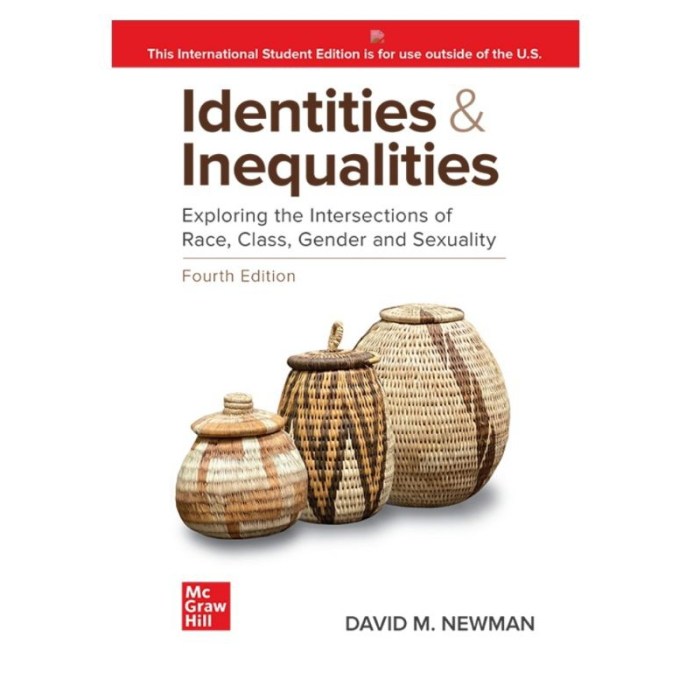Race class and gender intersections and inequalities 10th edition – Race, Class, and Gender Intersections and Inequalities: 10th Edition delves into the intricate tapestry of social identities and the ways in which they intersect to create unique experiences of oppression and privilege. This groundbreaking text explores the historical and contemporary manifestations of inequality, examining the impact of race, class, and gender on education, employment, housing, and health outcomes.
Through a comprehensive analysis of intersectional approaches to social justice, the book provides a roadmap for understanding and addressing the complex challenges faced by marginalized communities.
This revised edition features updated research, case studies, and policy recommendations, offering a timely and authoritative examination of the intersectionality of race, class, and gender. It is an essential resource for scholars, students, policymakers, and activists seeking to promote social justice and create a more equitable society.
Intersectionality: Race, Class, and Gender
Intersectionality is a theoretical framework that examines how multiple forms of oppression interact to shape the experiences of individuals and communities. It recognizes that individuals do not experience oppression based solely on one identity category, such as race, class, or gender, but rather that their experiences are shaped by the intersection of these and other identities.
Intersectional Identities and Marginalization: Race Class And Gender Intersections And Inequalities 10th Edition
Intersectionality emphasizes that individuals can experience multiple forms of oppression simultaneously. For example, a Black woman may experience racism, sexism, and classism. These forms of oppression are not separate but rather intersect and reinforce each other, creating a unique set of challenges and barriers for marginalized communities.
Historical and Contemporary Manifestations of Inequality, Race class and gender intersections and inequalities 10th edition
- The historical roots of race, class, and gender inequalities in the United States can be traced to the legacy of slavery, colonialism, and patriarchal systems.
- These inequalities have evolved over time, taking new forms in the contemporary era, such as mass incarceration, racial profiling, and the gender pay gap.
Social and Economic Consequences of Intersectional Inequality
Intersectional inequality has profound social and economic consequences. It leads to disparities in education, employment, housing, and health outcomes, which contribute to the perpetuation of poverty and inequality.
- For example, Black women are more likely to experience poverty, unemployment, and housing insecurity than White women or men.
Intersectional Approaches to Social Justice
Addressing intersectional inequality requires a multifaceted approach that takes into account the unique experiences of marginalized communities. Various theoretical and practical approaches exist, including:
- Critical race theory
- Feminist theory
- Queer theory
- Disability studies
These approaches provide a lens for understanding the complex interplay of oppression and privilege, and they inform the development of policies and initiatives that aim to promote social justice.
Intersectionality in Education and Research

Incorporating intersectionality into education and research is crucial for enhancing our understanding of social issues and informing policy development. By examining the intersections of race, class, and gender, we can:
- Identify the unique challenges faced by marginalized communities
- Develop more effective interventions and policies
- Promote a more just and equitable society
FAQs
What is intersectionality?
Intersectionality is a theoretical framework that examines how different forms of oppression, such as racism, sexism, and classism, overlap and interact to create unique experiences of discrimination and privilege.
How does intersectionality impact individuals?
Intersectionality recognizes that individuals do not experience oppression based on a single identity category, but rather through the intersection of multiple identities. This can lead to unique challenges and barriers that are not fully understood by traditional approaches to social justice.
What are the social and economic consequences of intersectional inequality?
Intersectional inequality has a profound impact on individuals and communities. It can lead to disparities in education, employment, housing, and health outcomes, contributing to the perpetuation of poverty and inequality.
What are intersectional approaches to social justice?
Intersectional approaches to social justice recognize the interconnectedness of different forms of oppression and seek to address them simultaneously. This involves creating policies and programs that are tailored to the specific needs of marginalized communities.
Why is it important to incorporate intersectionality into education and research?
Incorporating intersectionality into education and research allows for a more comprehensive understanding of social issues and the development of more effective policies. It helps to ensure that the experiences of marginalized communities are not overlooked or marginalized.